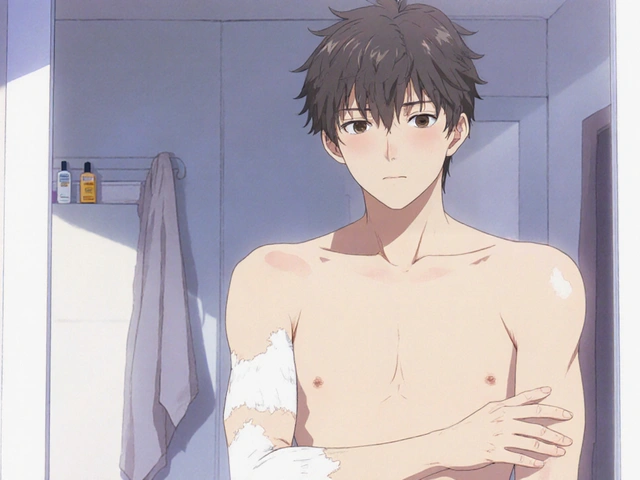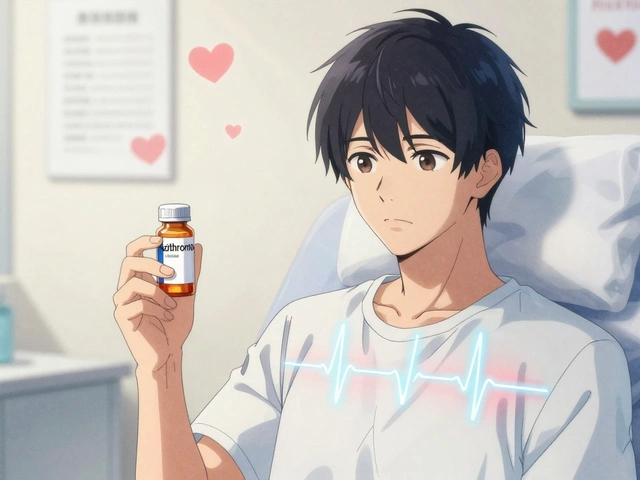Vitiligo Treatment Decision Tool
Vitiligo Treatment Assessment
Answer these questions to get personalized recommendations based on medical guidelines and research.
Recommendation
Benoquin Cream isn’t your typical skin cream. It doesn’t brighten, hydrate, or fade sunspots. It permanently removes pigment. Used by people with widespread vitiligo, it’s a deliberate choice to bleach unaffected skin to match depigmented patches. It’s not a cure. It’s a cosmetic decision made after years of trying everything else. And it’s not for everyone.
Monobenzone, the active ingredient in Benoquin, is a potent chemical that destroys melanocytes - the cells that make skin color. Once those cells are gone, they don’t come back. That’s why it’s only recommended for people with vitiligo covering more than 50% of their body. If you still have large areas of normal skin, using it could leave you with uneven, patchy results or even make your condition look worse.
Why People Choose Benoquin Cream
For some, vitiligo isn’t just a skin condition - it’s a daily emotional burden. Sunburns on white patches, stares in public, failed makeup attempts, and the constant effort to blend in can wear a person down. Benoquin offers a different kind of freedom: the freedom to stop fighting your skin. Instead of covering up, you even it out. The goal isn’t to restore color - it’s to remove the contrast.
Studies from the Journal of the American Academy of Dermatology show that about 70% of patients using monobenzone for over a year report improved quality of life. That’s not because their skin looks ‘better’ - it’s because they stop feeling like they have to hide.
But Benoquin isn’t the only option. If you’re considering it, you should know what else is out there - and why some alternatives might be safer, more reversible, or better suited to your situation.
Top Alternatives to Benoquin Cream
There are three main categories of alternatives: repigmentation therapies, topical lightening agents, and cosmetic solutions. Each has different goals, risks, and results.
1. Topical Corticosteroids and Calcineurin Inhibitors
These are the first-line treatments for early or limited vitiligo. They don’t bleach skin - they try to bring color back.
- Topical corticosteroids like hydrocortisone or clobetasol reduce inflammation and can stimulate melanocyte activity. Used daily for 3-6 months, they show repigmentation in 30-50% of cases, especially on the face and neck.
- Calcineurin inhibitors like tacrolimus (Protopic) and pimecrolimus (Elidel) are non-steroidal. They’re safer for long-term use on sensitive areas like the eyes and genitals. Repigmentation rates are similar to steroids but without skin thinning.
These treatments work best when started early. If your vitiligo has been stable for over a year, they’re less likely to help. And they won’t work if you’ve already lost most of your pigment.
2. Narrowband UVB Phototherapy
This is the most effective medical treatment for repigmentation. It uses targeted UVB light to wake up dormant melanocytes.
Patients typically get treatments 2-3 times a week for 6-12 months. About 60-70% see noticeable repigmentation, especially on the face, trunk, and upper limbs. It doesn’t work as well on hands and feet.
It’s not a cream - it’s a clinic-based therapy. But it’s reversible, non-destructive, and doesn’t change your natural skin tone elsewhere. Many dermatologists recommend it before considering monobenzone.
3. Ruxolitinib Cream (Opzelura)
Approved by the FDA in 2022, this is the first topical JAK inhibitor for vitiligo. It works by blocking immune signals that attack melanocytes.
In clinical trials, over 50% of patients using ruxolitinib cream twice daily for 24 weeks saw at least 75% repigmentation on the face. Results continued to improve through 52 weeks. It’s not a cure, but it’s the most promising new option in decades.
It’s expensive - about $1,000 per tube - and insurance doesn’t always cover it. But if you have localized vitiligo and want to restore color without bleaching, this is the most advanced option currently available.
4. Cosmetic Camouflage and Makeup
Not a treatment - but a practical solution. Products like Dermablend, Covermark, or even high-coverage foundations can match skin tone perfectly.
Modern camouflage makeup is waterproof, long-lasting, and designed for medical use. Some brands even offer custom color mixing services. It’s temporary, but it gives immediate results with zero risk.
For people who aren’t ready to commit to permanent changes, or who want to test how they feel with even-toned skin, this is a low-stakes way to explore options.
Why Benoquin Cream Might Not Be Right for You
Monobenzone isn’t just strong - it’s irreversible. Once you start, you can’t stop the process. And it doesn’t stop at the borders of your vitiligo patches. It spreads. Slowly, but surely.
Here’s what most people don’t tell you:
- It can cause severe sunburn. Without pigment, your skin has zero natural protection. You’ll need SPF 50+ every day, year-round - even in winter.
- It can bleach your eyebrows, eyelashes, and hair if it touches them.
- It’s toxic to others. If someone else touches your skin after you’ve applied it, they can develop vitiligo-like patches. That’s why you must wash your hands after every application and avoid sharing towels or clothing.
- It’s banned in the EU and Canada due to safety concerns. In the U.S., it’s only available by prescription.
And here’s the hard truth: if your vitiligo isn’t stable - if new patches are still forming - using Benoquin could make things worse. You might end up bleaching skin that could have repigmented naturally.

When to Consider Benoquin Cream
You might be a good candidate if:
- Your vitiligo covers more than half your body.
- New patches haven’t appeared in the last 1-2 years.
- You’ve tried repigmentation treatments for at least 6-12 months with little to no success.
- You’re prepared for lifelong sun protection and strict hygiene.
- You’ve spoken with a dermatologist who specializes in vitiligo and agrees it’s the right step.
It’s not a last resort - it’s a deliberate, informed choice. Many people who use it say they wish they’d done it sooner. Others regret it because they rushed into it without understanding the permanence.
Real-Life Scenarios: What Works?
Meet Maria, 42, from Atlanta. She had vitiligo for 15 years. Her arms, legs, and chest were mostly white. She tried steroids, UVB, and even a skin graft - nothing stuck. She started Benoquin in 2023. After 10 months, her skin was uniformly light. She now wears tank tops without fear. ‘I don’t have to explain myself anymore,’ she says.
Then there’s James, 28, from Chicago. He had two small patches on his hands. He tried ruxolitinib cream for six months. His color returned in 80% of the affected areas. He didn’t need to bleach anything. He still uses sunscreen, but he didn’t lose his natural tone.
Neither is ‘right’ or ‘wrong.’ They’re different paths to the same goal: peace with your skin.

What to Do Next
If you’re thinking about Benoquin, here’s what to do:
- See a board-certified dermatologist who treats vitiligo. Not every dermatologist knows the nuances.
- Ask for a full-body assessment. Are your patches stable? How much skin is affected?
- Try repigmentation first. Even if you think it won’t work, give it a real shot.
- Test cosmetic camouflage. See how you feel with even-toned skin before making permanent changes.
- If you still feel Benoquin is right, get a second opinion. Talk to other patients in support groups. Read the long-term side effect reports.
There’s no rush. Vitiligo doesn’t get worse overnight. Your decision doesn’t have to be made this week.
Final Thoughts
Benoquin Cream is not a miracle. It’s a tool - powerful, permanent, and risky. It’s not the answer for everyone, and it’s not the only answer. For some, it’s the only thing that brings peace. For others, repigmentation, phototherapy, or even just good makeup is enough.
The real question isn’t ‘Which cream works best?’ It’s ‘What do you need your skin to do for you?’
There’s no shame in wanting to blend in. There’s no shame in wanting to stand out. The right choice is the one that lets you live without fear - not the one that looks the most ‘normal.’
Is Benoquin Cream safe for long-term use?
Benoquin Cream is not meant for short-term use. Long-term use is only considered for people with extensive vitiligo who have no other options. It carries serious risks: permanent skin bleaching, extreme sun sensitivity, and potential transfer to others. It’s not FDA-approved for general use and is banned in several countries. Always use it under strict medical supervision.
Can I use Benoquin Cream on my face?
Most dermatologists strongly advise against using Benoquin on the face. The skin there is thinner, more sensitive, and more visible. Bleaching facial skin can lead to unnatural-looking results, increased sun damage, and irreversible changes to eyebrows and eyelashes. Repigmentation treatments like ruxolitinib or phototherapy are far safer and more effective for facial vitiligo.
How long does it take for Benoquin Cream to work?
Results vary, but most people see noticeable lightening after 2-4 months of daily use. Full depigmentation can take 6-12 months or longer. The process is slow and uneven. It’s not a quick fix - it’s a months-long commitment with strict daily care.
Are there natural alternatives to Benoquin Cream?
There are no proven natural alternatives that can permanently depigment skin like monobenzone. Some people try herbal creams or oils, but none have scientific backing. Natural remedies may help with inflammation or skin health, but they won’t remove pigment. Be cautious of products claiming to ‘cure’ vitiligo - they’re often scams.
Can I use Benoquin Cream if I have only a few patches?
No. Benoquin Cream is only recommended for people with vitiligo covering more than 50% of their body. If you have only a few patches, using it could cause your normal skin to bleach unevenly, making your condition look worse. Repigmentation treatments are the right choice in this case.
Is ruxolitinib cream better than Benoquin Cream?
It depends on your goal. Ruxolitinib cream helps restore your natural skin color - it doesn’t remove it. If you want to bring back pigment, it’s the best option available. If you want to remove pigment to match your white patches, Benoquin is the only option. They serve completely different purposes.
Does insurance cover Benoquin Cream or its alternatives?
Insurance rarely covers Benoquin Cream because it’s considered cosmetic. However, some plans may cover ruxolitinib cream, phototherapy, or topical steroids if prescribed for vitiligo. Always check with your provider. Many pharmaceutical companies offer patient assistance programs for expensive medications like Opzelura.
If you’re unsure where to start, talk to a dermatologist who specializes in pigment disorders. Ask for a referral to a vitiligo clinic. You’re not alone - and you don’t have to make this decision in isolation.







Sean Nhung
October 31, 2025 AT 10:28Man, I didn’t even know this stuff existed 😳 I’ve been following vitiligo stuff for years but never heard of monobenzone. So it’s like… you bleach your whole body to match the white patches? Wild. I’m kinda impressed but also terrified.
kat pur
November 1, 2025 AT 16:33It’s not about looking normal. It’s about feeling safe in your own skin. I’ve seen people choose this and walk taller afterward. No shame in choosing peace over pigment.
Vivek Mishra
November 3, 2025 AT 02:30Benoquin is dangerous. Don’t do it.
thilagavathi raj
November 4, 2025 AT 08:41OMG I JUST READ THIS AND MY HEART IS RACING 🥹 I’ve been hiding for 12 years and now I’m thinking… what if I just… let go? Is that selfish? Or brave? I don’t know anymore.
Sandridge Neal
November 4, 2025 AT 12:57Thank you for writing this with such clarity and compassion. This is exactly the kind of resource people with vitiligo need - not just medical facts, but emotional context. You’ve given people permission to choose their own path without judgment. That’s powerful.
Diane Thompson
November 6, 2025 AT 06:28So basically this cream is like, ‘hey let’s just turn you into a ghost’? And people actually do this? I mean… okay. But why not just wear long sleeves and call it a day?
Helen Moravszky
November 6, 2025 AT 22:18Okay so I just read this and I’m crying?? Like, not sad crying, but like… ‘oh my god someone finally gets it’ crying. I tried ruxolitinib for 6 months and it barely worked on my arms but I kept going because I didn’t want to bleach. But now I’m wondering… what if I just stopped fighting? 🤔
Reginald Matthews
November 8, 2025 AT 20:37I’ve been on phototherapy for 14 months. Got some color back on my chest, but my hands? Still white. I’ve thought about Benoquin. Not because I hate my skin - but because I’m tired of the sunburns and the stares and the ‘what happened to you?’ questions. I’m not ready yet. But I’m listening.
Debra Callaghan
November 10, 2025 AT 08:23This is irresponsible. You’re encouraging people to permanently destroy their skin. What about the kids who might use this without understanding? What about the people who’ll bleach themselves and then regret it? This isn’t empowerment - it’s negligence.
Mitch Baumann
November 10, 2025 AT 12:22…And yet, one must acknowledge the profound existential elegance of monobenzone’s aesthetic: a unilateral, almost minimalist, reclamation of identity through chromatic erasure. It’s not ‘bleaching’ - it’s ontological alignment. 🌫️✨
Gina Damiano
November 11, 2025 AT 08:56Wait, so if I use this and then hug my kid, they could get vitiligo too?? Like… that’s a thing? Are you serious? I can’t believe no one told me this. I thought it was just me and my skin. 😳
Emily Duke
November 11, 2025 AT 17:36you think you're the only one who thought about this?? i did it. 2 years ago. my eyebrows are white now. my husband won't kiss me on the neck. i'm not sorry. i sleep better. i don't cry in the mirror anymore. but yeah... i miss my tan.
Stacey Whitaker
November 13, 2025 AT 09:07My cousin did this. Now she wears crop tops in winter. She says she finally feels like herself. No drama. No explanations. Just… peace. That’s all anyone really wants, right?